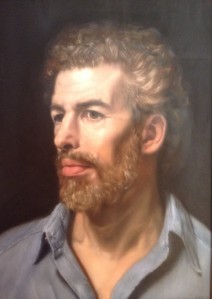Born to do Math 66 – Helen Fisher
Scott Douglas Jacobsen & Rick Rosner
June 22, 2017
[Beginning of recorded material]
Scott Douglas
Jacobsen: The frames can be mixed up too. There’s a biological anthropologist
named Helen Fisher. She studies love. She studies long-term love with three
separate concepts, but then ties this to different personalities and different
dominant neural circuits, and the neurotransmitters, associated with it.
She has this nice
scaling up. She applies this to statistical models. O believe she has been an
advisor for Match.com. There are cool things that you can do. But I think it
also helps separate the “wheat from the chaff.” You can differentiate that kind
of anthropological work and biological work from pseudo-work like the Law of
Attraction.
That appear to be
popular in America and are bogus.
Rosner: You mean
Oprah’s The Secret. You think
positive thoughts and so on. Yea, that’s just bullshit. There are actual
mechanisms for making it happen. There
are all sorts of ways of talking about falling in love. You can talk abut
evolutionary theory and sociobiology.
There is shorthand stuff, like for middle school or high
school. Hot people will hook up with each other. IN 8th grade and 9th
grade, the pioneers in hooking up are, for the most part, the very coolest
kids. They have the highest demonstrated value.
[End of recorded material]
Authors[1]

Rick Rosner
American Television Writer
RickRosner@Hotmail.Com
Rick Rosner

Scott Douglas Jacobsen
Editor-in-Chief, In-Sight Publishing
Scott.D.Jacobsen@Gmail.Com
In-Sight Publishing
Endnotes
[1] Four format points for the session article:- Bold text following “Scott Douglas Jacobsen:” or “Jacobsen:” is Scott Douglas Jacobsen & non-bold text following “Rick Rosner:” or “Rosner:” is Rick Rosner.
- Session article conducted, transcribed, edited, formatted, and published by Scott.
- Footnotes & in-text citations in the interview & references after the interview.
- This session article has been edited for clarity and readability.
- American Psychological Association. (2010). Citation Guide: APA. Retrieved from http://www.lib.sfu.ca/system/files/28281/APA6CitationGuideSFUv3.pdf.
- Humble, A. (n.d.). Guide to Transcribing. Retrieved from http://www.msvu.ca/site/media/msvu/Transcription%20Guide.pdf.
License
In-Sight Publishing and In-Sight: Independent Interview-Based Journal by Scott Douglas Jacobsen is licensed under a Creative Commons Attribution-NonCommercial-NoDerivatives 4.0 International License.
Based on a work at www.in-sightjournal.com and www.rickrosner.org.
Copyright
© Scott Douglas Jacobsen, Rick Rosner, and In-Sight Publishing and In-Sight: Independent Interview-Based Journal 2012-2017. Unauthorized use and/or duplication of this material without express and written permission from this site’s author and/or owner is strictly prohibited. Excerpts and links may be used, provided that full and clear credit is given to Scott Douglas Jacobsen, Rick Rosner, and In-Sight Publishing and In-Sight: Independent Interview-Based Journal with appropriate and specific direction to the original content.
No comments:
Post a Comment